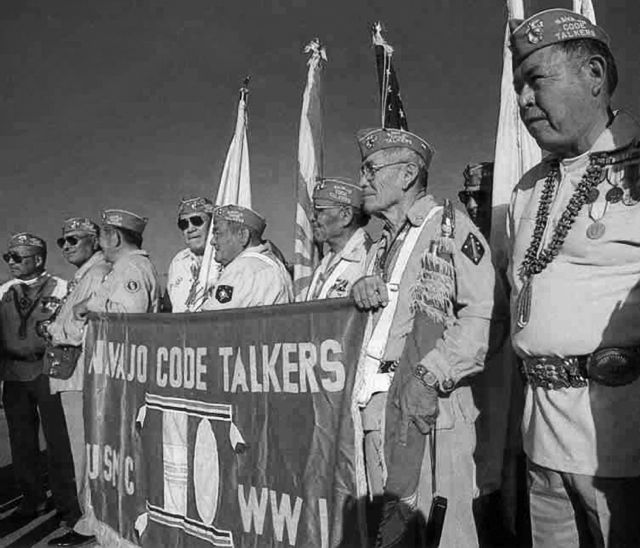In the heart of World War II, while bullets flew and nations clashed, a small group of Native American men quietly altered the fate of history not with guns or tanks, but with their words. In 1942, 29 Navajo men enlisted in a top-secret mission with the U.S. Marine Corps. Their task was both daring and brilliant: create a code based on their native language, one so complex and obscure that no enemy could break it.
What they accomplished would go on to become one of the most important achievements in U.S. military communications.
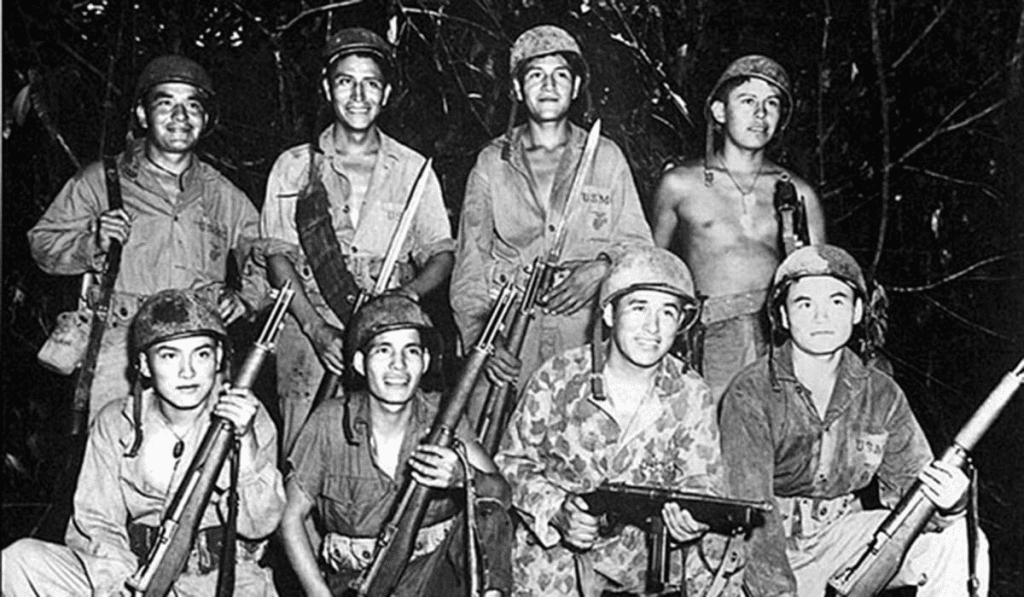
From Oppression to Opportunity
The irony of their mission wasn’t lost on the men involved. Just decades earlier, the U.S. government had tried to suppress Indigenous languages in boarding schools, punishing Native children for speaking their own tongues. But now, the same language deemed “un-American” was about to become the backbone of a secret code.
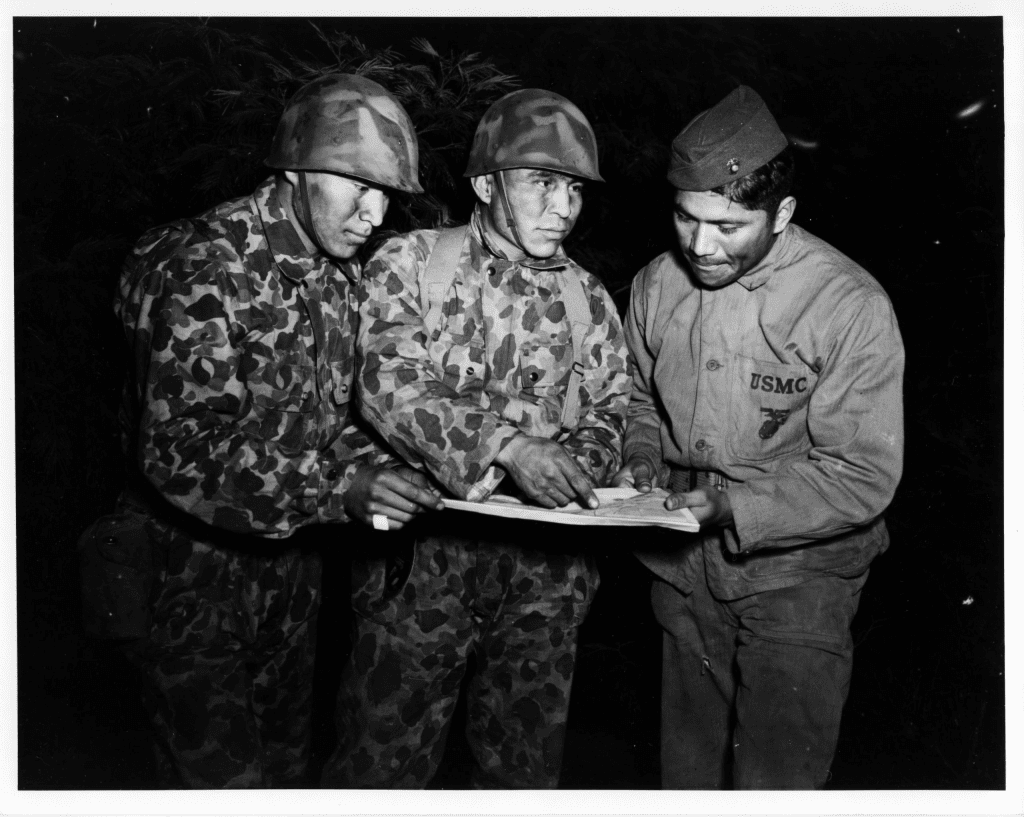
The Navajo language, unwritten and virtually unknown outside its community, was ideal for encryption. Its tonal complexity and unique structure made it nearly impossible to decipher without deep cultural knowledge. The 29 original recruits worked tirelessly, developing a specialized dictionary of 411 terms that translated military operations, weaponry, and tactics into Navajo.
Video:
An Unbreakable Code
A Code No One Could Break
The code wasn’t just complex it was flawless. During some of the fiercest battles in the Pacific Theater, from Guadalcanal to Peleliu, the Navajo Code Talkers transmitted vital information with speed and accuracy that far outpaced traditional cryptographic systems.
At the Battle of Iwo Jima in 1945, six Navajo Code Talkers sent over 800 messages in just two days. Not a single one contained an error. Their flawless communication helped coordinate troop movements, air strikes, and supply drops, all while keeping Japanese intelligence completely in the dark.
Japanese cryptographers who had cracked almost every other Allied code were left utterly baffled. They never came close to deciphering the Navajo system.
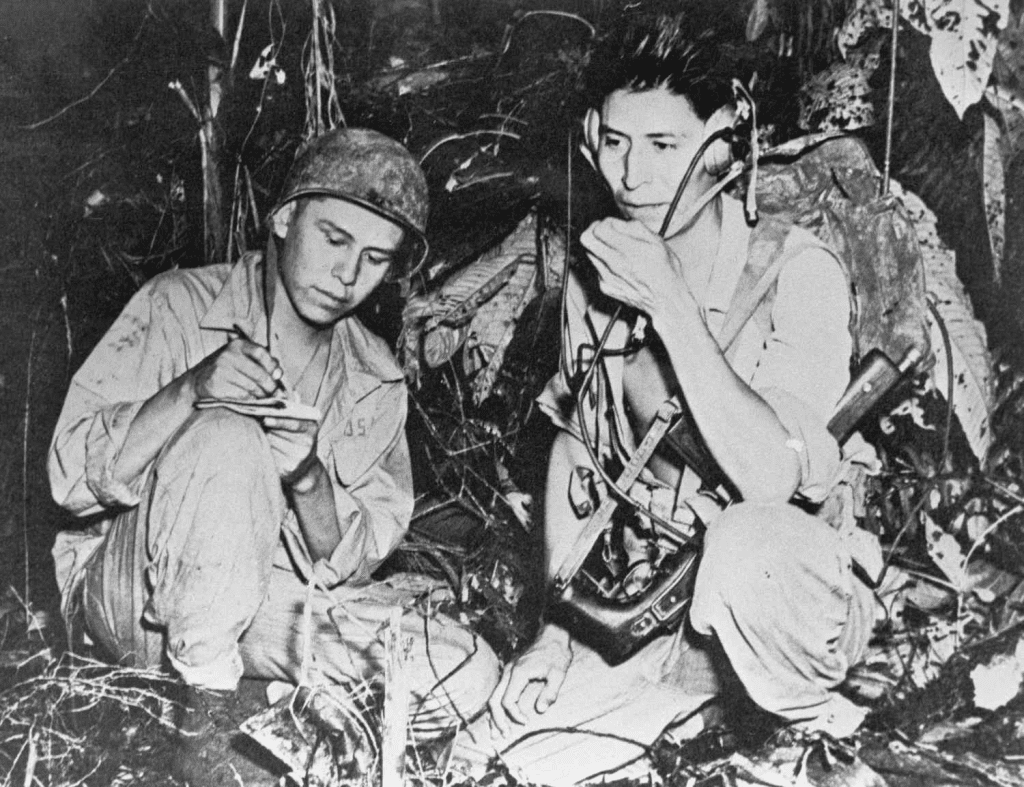
The Silent Service
Despite their extraordinary contributions, the Code Talkers were sworn to secrecy. For over two decades after the war ended, their work remained classified. Even their families had no idea what they had accomplished. It wasn’t until 1968 that the military officially declassified their mission.
And even then, recognition was slow. These men had not only helped win a war they had done so while representing a culture long pushed to the margins of American society.
Video:
Navajo Code Talkers | Short Documentary | EXPLORE MODE
Long-Awaited Recognition
In 2001, nearly 60 years after they first joined the mission, the original 29 Navajo Code Talkers were awarded the Congressional Gold Medal the highest civilian honor in the United States. More than 400 other Native American Code Talkers, from tribes like the Comanche, Hopi, and Cherokee, would also be recognized for their service.
It was a powerful, long-overdue moment of national gratitude. These men had risked everything not just their lives, but their language, their heritage, and their identity to protect a country that had not always protected them.
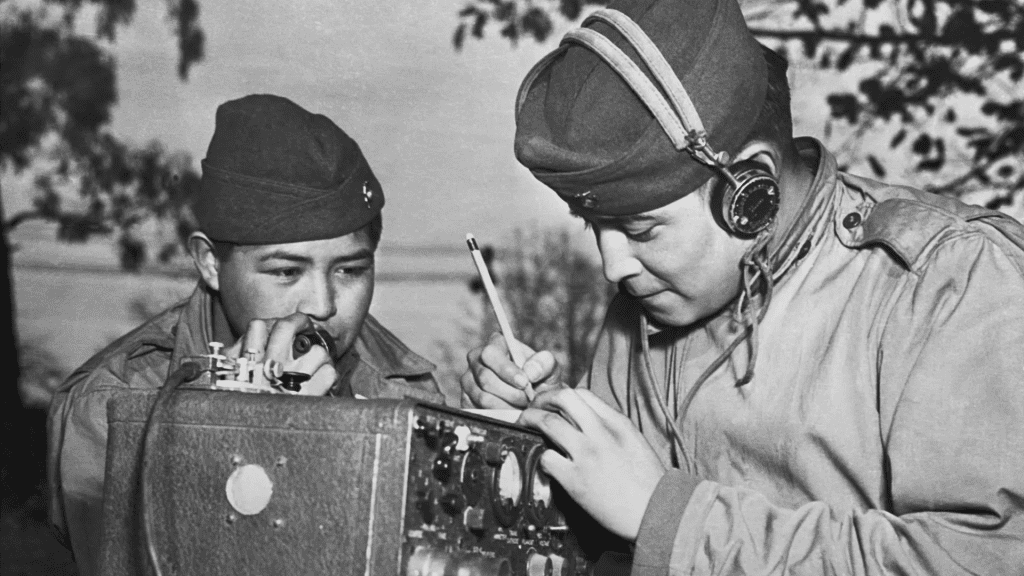
A Legacy That Speaks Louder Than Words
The story of the Navajo Code Talkers is one of resilience, brilliance, and patriotism. They turned the very language once targeted for erasure into an unbreakable shield of national defense. Their code saved thousands of lives and played a critical role in the Allied victory in the Pacific.
Today, their story is shared in classrooms, museums, and history books as a testament to the power of cultural identity and unity. These warriors didn’t just serve they redefined what it means to serve, showing that courage often comes not from the battlefield alone, but from the deep roots of tradition, pride, and silence kept for far too long.
